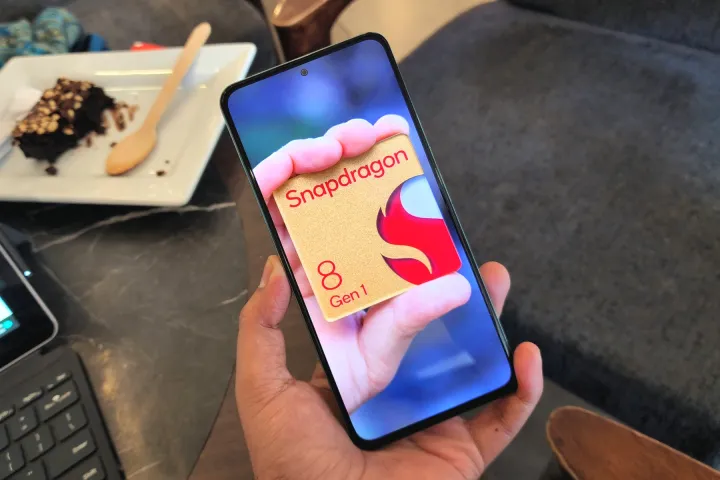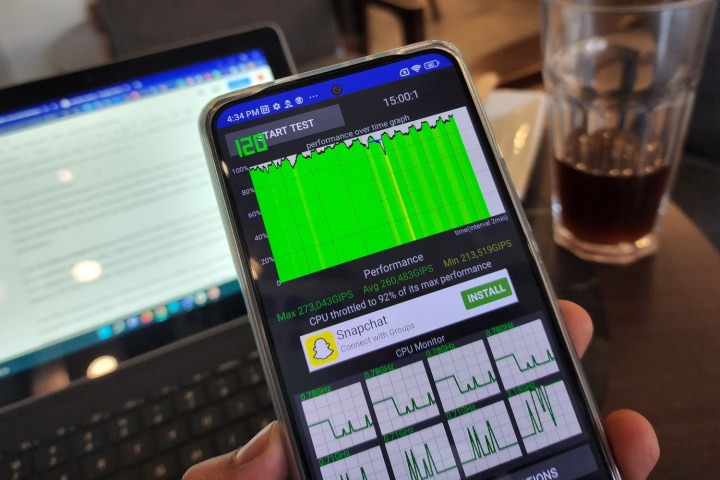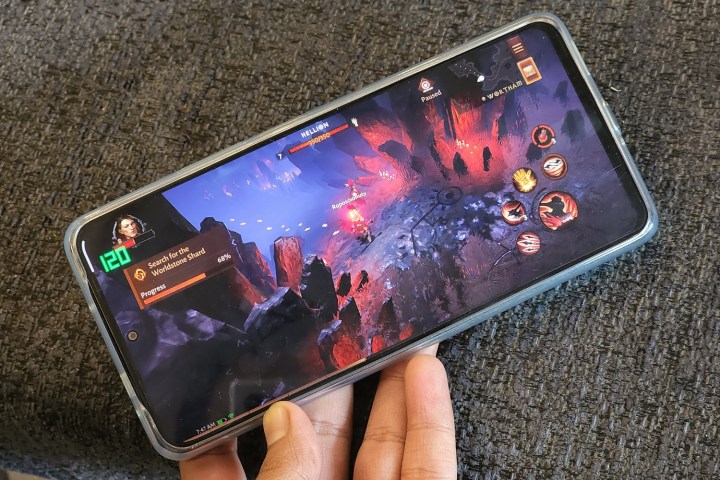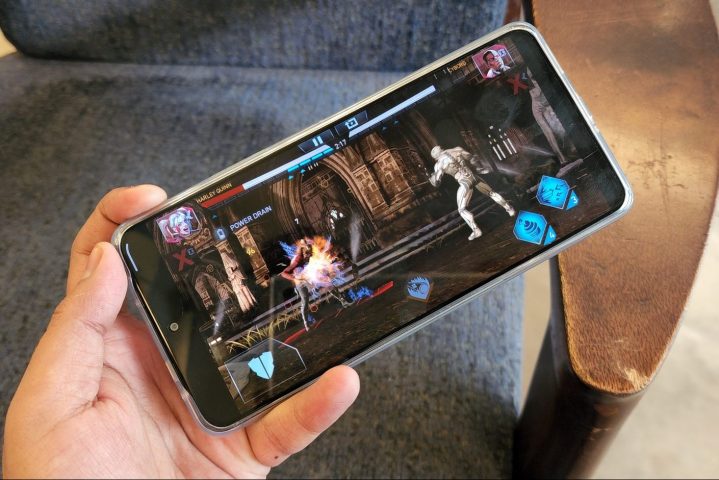Over the past couple of years, Qualcomm has adopted a novel strategy of selling old flagship chips for smartphones under a new name. Apple did something similar with the Apple Watch Series 7, arming it with the S7 processor, which is essentially a repackaged version of the S6 silicon inside the Apple Watch Series 6. And, if rumors are to be believed, Apple’s bringing that strategy to the iPhone this year with the iPhone 14 and 14 Max.
On paper, it sounds like just another tactic by brands to ship old — and more affordable — hardware into a new device. It really stings, especially when the “next-generation” device comes at a price premium while a component as fundamental as the processor remains unchanged. Apple can be bashed for engaging in such behavior, but in Qualcomm’s case, the reverse has happened.

Companies like Poco, an off-shoot of Chinese giant Xiaomi, have really milked Qualcomm’s “old-but-new” crop of flagship-class chips to make some extremely good phones that offer a terrific value for money. The latest example of that strategy is the Poco F4 5G, a direct successor to the wildly popular Poco F1 that offered the top-tier Snapdragon 845 chip for under $400 back in 2019.
Poco is back to that pitch with the F4 5G, arming it with the Snapdragon 870 chip. This is the kind of chip that doesn’t get a fancy introduction at one of Qualcomm’s yearly launch events in Hawaii. Instead, it’s quietly sold to vendors with very little fanfare. However, it’s the performance-to-price ratio that does the talking for this black sheep.
Same power, lower price
Qualcomm’s Snapdragon 870 is essentially a repackaged version of the Snapdragon 865 chip that served its processing chops on flagships such as the Galaxy S20 trio and the OnePlus 8. It follows in the footsteps of Snapdragon 860, which in turn, was essentially a rechristened iteration of the Snapdragon 855 series chips.

Despite a different name, there’s not much to differentiate between the mid-tier Snapdragon 870 and flagship 865. Both rely on the same Kryo 585 CPU core, use the Snapdragon X55 5G modem, an identical Wi-Fi/Bluetooth chip, the Spectra 480 image signal processor, and the same Adreno 650 graphics engine. What really sets the two apart, though, is the accessibility to smartphone shoppers in 2022.
The Snapdragon 865-powered Galaxy S20 started at $999 when it hit the shelves in the U.S. The equally powerful Snapdragon 870 is available with the Poco F4 5G at the starting price of INR 28,000, which translates to roughly $350 based on the current conversion rates. That’s nearly a third of what a phone powered by a current-gen Qualcomm processor would usually cost. With banking and exchange offers, you can get this phone for as low as $275 in India.
First, the benchmarks test
Taking the customary route, I ran a few synthetic benchmarks on the Poco F4, such as Geekbench, 3DMark, AnTuTu 9, and GFXBench. The Snapdragon 870 chip inside the Poco phone was neck and neck with the bonafide Snapdragon 865 flagships, such as the Galaxy S20. Both the CPU and GPU also showed impressive stability at peak performance.

Just to be sure of the performance figures, I ran the 3DMark Wildlife Extreme Stress test for three days in a row, and the Poco F4 consistently managed a tally of 90% or more on the stability metric. Running the CPU Throttle test with 20 threads in action and variable durations of 15, 30, and 40 minutes, CPU throttling didn’t dip below the 85% mark. For a phone as affordable as the F4, that’s very impressive.
I also put the Poco F4 5G through three instances of the GFXBench Manhattan (1080p, offscreen, ES 3.0), and it averaged an output of 140fps without things getting toasty. But then, I was also sitting in a room with AC blasting cold air at about 73 degrees Fahrenheit. Outdoors, your thermal mileage might differ.
Gaming on a two-year-old chip
But benchmarks are not always accurate indicators of a phone’s real-world performance. This becomes especially apparent for a chipset that is essentially a relic of 2020 brought back to life in 2022. The best example of that disparity is mobile games. These have touched new ceilings of power consumption in the past two years and really push a phone’s silicon to the max.

So, in the name of professional research, I piled a healthy few hours of mobile gaming on the Poco F4 5G. I started with one of the hottest properties of mobile gaming in 2022 — Diablo Immortal. I pushed the graphics settings to the max in the Blizzard game and came out with a mostly positive experience.
Talking about the core experience metrics, I rarely came across any frame drops or hiccups while vanquishing some hell spawns. Even during the most intense combat scenes, the average rise in CPU temperature stood at around nine degrees, which is not shabby for a gaming session that lasted around 40 minutes.
It was a pleasant surprise to see that the virtually two-year-old Qualcomm chip will let you push demanding games like Apex Legends Mobile, Call of Duty: Mobile, and BGMI at peak graphics settings with ease. Injustice 2 consistently ran above 100fps without a stutter.

Of course, a lot depends on the thermal hardware inside the Snapdragon 870 phone you buy. As far as Poco F4 goes, the vapor chamber and 7-layers graphite sheets do an admirable job of keeping things cool. As for regular, less demanding tasks like scrolling Twitter and Instagram feeds endlessly for a few hours, the 120Hz screen sweetened the smooth experience.
Disclaimer: GameBench gave us a free journalist license for using their tool, which is otherwise paid. Although GameBench helped us with a free license, they did not have any input in this article.
This is how you reuse old smartphone chips
If there was ever a formula destined for the “budget flagship” nirvana, the Snapdragon 870 happens to be The Chosen One in 2022. Of course, a lot depends on a phone’s manufacturer when it comes to selecting — and omitting — hardware aspects to keep the asking price in check. On the Poco F4, there’s hardly anything to raise a finger at.
Astonishingly, the Poco phone offers a Gorilla Glass 5-protected 120Hz OLED display with Dolby Vision and HDR10+ playback support. The brightness levels max out at 1,300 nits, but I low-key wish that the auto-brightness system was a tad less aggressive at doing its job. Couple that with capable cameras and a 67W charger in the box, and it’s a solid overall package.

But the biggest attraction — and what kickstarted this article in the first place — is the processor here. The Snapdragon 870 may not be getting the same attention as the Snapdragon 8 Gen 1 or Snapdragon 8+ Gen 1, but it’s absolutely worthy of your attention. It’s reliable, powerful, and brings legitimate flagship performance to phones that cost a fraction of what they used to be. Call it clever marketing or just a ploy to sell the old stock of flagship silicon. What matters here is that Qualcomm’s strategy is ultimately beneficial for the average person.
For me, as someone who tests and recommends phones to non-nerdy humans to earn a living, I couldn’t be happier at what Qualcomm and Poco have done here. It’s a shame that this phone and other 870-powered devices aren’t more widely available in the U.S., because what Qualcomm’s achieved here is nothing short of impressive.
Editors' Recommendations
- Qualcomm’s newest chip will supercharge budget Android phones
- I moved a car with my eyes, and it blew me away
- You won’t believe how I improved my phone’s battery life
- I used one of the coolest iPhone accessories in years at CES 2024
- This app put iMessage on my Android phone — and it blew me away


